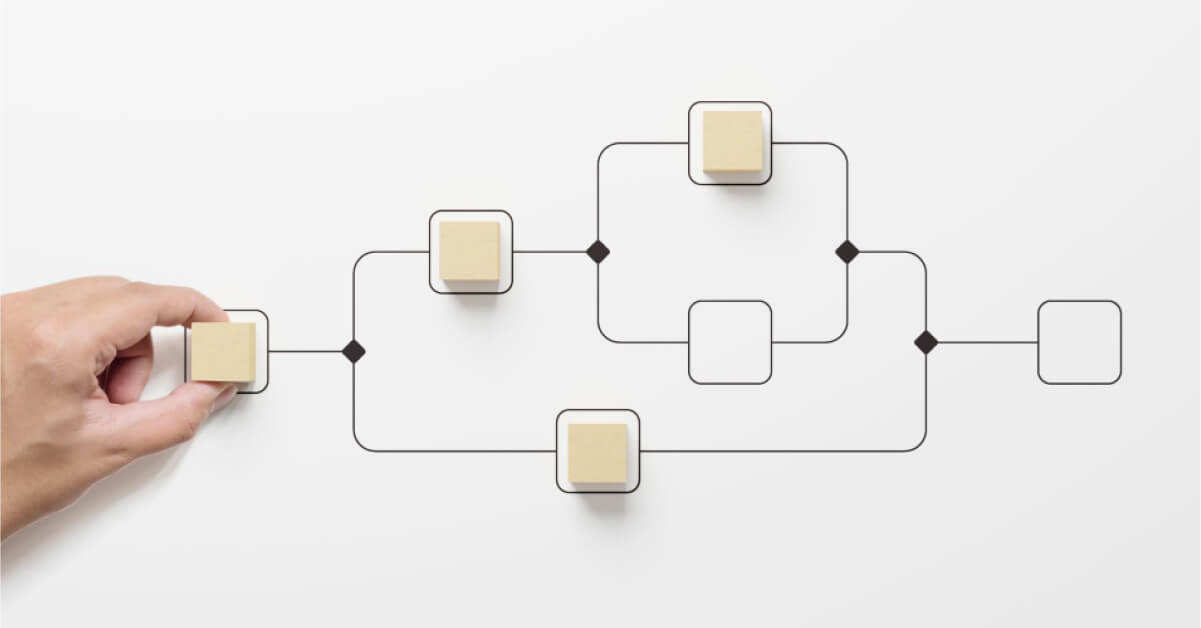Feedback mechanisms: Types, and ways to improve the process in the workplace

Feedback mechanisms are indispensable components of the contemporary workplace, serving as a cornerstone for effective performance management and organizational growth.
These mechanisms provide a structured approach for conveying performance-related information, facilitating continuous improvement, and fostering a culture of transparency and accountability.
By systematically gathering and delivering insights, feedback mechanisms enable individuals and teams to align their efforts with organizational goals, enhancing overall productivity and job satisfaction.
Much like the homeostatic mechanisms in the human body, which regulate conditions such as glucose levels and temperature to maintain stability, workplace feedback systems ensure that organizational processes function efficiently and adapt to changes.
Understanding these different types is crucial for implementing a comprehensive feedback system that addresses the workforce’s diverse needs. So, in this blog, we will delve into the definition of feedback mechanisms, explore the various types commonly used in the workplace, and discuss actionable strategies for improving the feedback process.
What are feedback mechanisms in the workplace?

Feedback mechanisms in the workplace are structured processes through which employees receive information about their performance, behaviors, and contributions.
These mechanisms serve as critical tools for aligning individual efforts with organizational goals, fostering professional development, and enhancing overall productivity. Feedback mechanisms function similarly to a negative feedback loop in biological systems, helping to maintain stability and improve performance.
By providing clear, constructive, and actionable insights, feedback mechanisms help employees understand their strengths, identify areas for improvement, and make necessary adjustments to their work practices.
There are several types of feedback mechanisms, each designed to suit different contexts and purposes. Formal mechanisms include performance appraisals, 360-degree feedback, and structured peer reviews, which provide comprehensive evaluations of an employee’s performance from multiple perspectives.
Informal feedback, on the other hand, involves spontaneous, day-to-day interactions between colleagues, supervisors, and subordinates. This type of feedback is often immediate and specific, allowing for quick adjustments and continuous improvement.
Effective feedback mechanisms are essential for creating a culture of open communication and continuous learning. They encourage employees to seek and value feedback, promoting a proactive approach to personal and professional growth.
Additionally, these mechanisms help to build trust and transparency within teams, as regular feedback fosters a sense of accountability and mutual respect.
Importance of feedback mechanisms at work

Feedback mechanisms at work are vital for fostering a culture of continuous improvement, enhancing employee engagement, and driving organizational success. Their importance can be highlighted through several key aspects:
1. Enhancing performance and productivity
Effective feedback mechanisms provide employees with clear insights into their performance, highlighting strengths and pinpointing areas for improvement. This targeted information allows individuals to refine their skills, align their efforts with organizational goals, and increase their overall productivity.
Regular feedback ensures that employees are aware of expectations and can make timely adjustments to their work practices. Constructive feedback acts as a negative feedback mechanism, helping employees correct their course and improve performance.
2. Fostering professional development
Feedback serves as a crucial tool for professional growth. By receiving constructive criticism and praise, employees can identify their developmental needs and pursue relevant training and learning opportunities.
This continuous learning process not only enhances individual competencies but also contributes to the organization’s overall talent development strategy. Data also shows that 94% of employees would stay at a company longer if it invested in their career development.
3. Promoting engagement and motivation
Regular, constructive feedback helps to keep employees engaged and motivated. Recognizing and rewarding positive behaviors boosts morale and reinforces a sense of achievement. On the other hand, constructive criticism, delivered appropriately, can challenge employees to improve and excel.
This balance of positive reinforcement and developmental guidance helps maintain high levels of employee engagement. Recognizing and rewarding positive behaviors can create a positive feedback loop, amplifying engagement and motivation. Gallup reports that employees who receive regular praise and recognition are 10-20% more productive.
4. Building a culture of trust and transparency
Open and honest feedback mechanisms contribute to a culture of trust and transparency within the workplace. When employees feel that their contributions are acknowledged and that their development is supported, they are more likely to trust their managers and colleagues.
This trust fosters a collaborative environment where ideas and feedback flow freely, driving innovation and teamwork. Additionally, open and honest feedback mechanisms help maintain a stable internal environment within the workplace, ensuring systems function near an ideal level.
5. Supporting organizational change and adaptability
Feedback mechanisms are essential during times of organizational change. They provide a channel for employees to express concerns, offer suggestions, and adapt to new processes or structures. Effective feedback helps organizations remain agile and responsive to internal and external changes, ensuring long-term sustainability and success.
What are the four major components of the feedback mechanisms?

Effective feedback not only fosters personal and professional growth but also aligns individual performance with organizational goals. Here are the four major components of feedback mechanisms:
- Feedback source: This can be a supervisor, peer, or subordinate who provides input. The effectiveness of feedback often depends on the credibility and perspective of the source.
- Feedback content: This refers to the information or observations shared. It should be specific, relevant, and actionable to be useful for improvement.
- Feedback recipient: The individual who receives the feedback. Their openness to receiving and applying feedback is crucial for it to be effective.
- Feedback process: This encompasses how feedback is delivered and discussed. It includes the timing, setting, and method of communication, which can influence how well the feedback is received and acted upon.
What are the different types of feedback mechanisms at work?
In the workplace, feedback mechanisms come in various forms, each serving distinct purposes and catering to different contexts. Understanding these types helps organizations implement a comprehensive feedback system that addresses diverse needs. Here are some of the key types of feedback mechanisms:
Formal feedback mechanisms
- Performance appraisals: Performance appraisals are systematic evaluations conducted periodically, typically annually or semi-annually. These reviews assess an employee’s performance against predefined criteria and objectives. They provide structured feedback, identify areas for improvement and set goals for future performance. Performance appraisals often involve self-assessment, manager evaluation, and sometimes peer reviews.
- 360-degree feedback: 360-degree feedback involves collecting feedback from a variety of sources, including supervisors, peers, subordinates, and sometimes clients. This comprehensive approach provides a well-rounded view of an employee’s performance, skills, and behaviors. It is particularly useful for leadership development and improving interpersonal skills, as it highlights strengths and areas for improvement from multiple perspectives.
- Structured peer reviews: Structured peer reviews involve colleagues evaluating each other’s performance based on specific criteria. This type of feedback is common in project-based work environments where teamwork and collaboration are critical. Peer reviews provide valuable insights into an individual’s contribution to the team and can highlight strengths and areas for improvement that may not be apparent to managers.
Informal feedback mechanisms
- Day-to-day feedback: Day-to-day feedback occurs through regular interactions between employees and their managers or colleagues. This type of feedback is often spontaneous, immediate, and specific to particular tasks or behaviors. It allows for quick adjustments and continuous improvement, fostering a culture of ongoing learning and development.
- Mentorship and coaching: Mentorship and coaching involve more experienced employees providing guidance, support, and feedback to less experienced colleagues. This relationship-based feedback mechanism focuses on long-term development, career growth, and skill enhancement. It helps mentees navigate challenges, build confidence, and achieve their professional goals.
Developmental feedback mechanisms
- Training feedback: Training feedback is provided during or after formal training sessions or workshops. It helps employees understand their progress, grasp new concepts, and apply learned skills effectively. Training feedback is crucial for ensuring that learning objectives are met and that employees can transfer new knowledge to their job roles.
- Self-assessment: Self-assessment encourages employees to reflect on their own performance, set personal goals, and identify areas for improvement. This type of feedback mechanism promotes self-awareness, accountability, and proactive development. When combined with other feedback types, self-assessment provides a comprehensive view of an individual’s progress.
Customer and client feedback
- Customer satisfaction surveys: Customer satisfaction surveys gather feedback from clients or customers about their experiences with the company’s products or services. This feedback is valuable for understanding external perceptions, identifying areas for improvement, and enhancing customer relations.
- Client feedback sessions: Client feedback sessions involve direct discussions with clients to obtain their input on performance, service quality, and areas for improvement. This type of feedback is particularly relevant for client-facing roles and can help improve client satisfaction and retention.
What is the difference between positive and negative feedback mechanisms?

In the workplace, positive and negative feedback mechanisms play distinct roles in shaping behavior and performance. Here’s a breakdown of the differences between them:
Positive Feedback Mechanisms
- Purpose: Positive feedback is aimed at reinforcing desired behaviors and outcomes. It acknowledges and rewards what employees are doing well, which encourages them to continue those behaviors.
- Focus: This feedback is centered on strengths, achievements, and successful practices. It highlights what is being done correctly and often includes specific examples of effective performance.
- Impact: Positive feedback can boost morale, increase motivation, and build confidence. It creates a supportive environment and can lead to higher job satisfaction and improved performance.
- Examples: Commending an employee for successfully leading a project, praising a team member for their creativity, or acknowledging consistent punctuality.
Negative feedback mechanisms
- Purpose: Negative feedback aims to correct undesired behaviors or outcomes. It identifies areas where performance is lacking or mistakes have been made, with the goal of improvement.
- Focus: This feedback is directed at weaknesses, errors, or areas needing development. It provides constructive criticism and suggests changes to rectify problems or enhance performance.
- Impact: While it can be uncomfortable, negative feedback is essential for addressing issues and guiding improvement. When delivered constructively, it helps employees understand areas for growth and avoid repeating mistakes.
- Examples: Pointing out errors in a report, addressing missed deadlines, or discussing issues with teamwork and communication.
What is a continuous feedback loop?

A continuous feedback loop is a dynamic process where feedback is regularly and systematically exchanged between individuals or teams, enabling ongoing improvement and adaptation. Unlike traditional feedback mechanisms that may occur at set intervals, a continuous feedback loop integrates feedback into daily interactions and workflows.
This approach fosters a culture of continuous learning and real-time responsiveness, allowing employees to make incremental improvements and address issues promptly.
In a continuous feedback loop, feedback is not a one-time event but an ongoing conversation. It involves frequent, actionable insights provided by supervisors, peers, or even self-assessment, which are immediately applied to work practices.
This real-time feedback helps employees stay aligned with organizational goals, adjust their performance as needed, and enhance their skills progressively.
The continuous feedback loop benefits organizations by promoting agility, improving performance, and boosting employee engagement. It encourages a proactive approach to problem-solving and personal development, as employees receive timely guidance and recognition.
Data also shows that Showing you value your colleagues and employees through regular feedback can lead to them being 3.6 times more likely to be engaged in their roles.
By embedding feedback into the everyday work experience, organizations can cultivate a more responsive, adaptive, and high-performing workforce, ultimately driving greater success and innovation.
7 Ways to improve feedback mechanisms in the workplace

Improving feedback mechanisms in the workplace is crucial for fostering a productive, engaged, and high-performing team. Here are seven effective ways to enhance feedback mechanisms:
1. Create a culture of open communication
Foster an environment where open and honest communication is encouraged and valued. Employees should feel comfortable giving and receiving feedback without fear of retribution. Encourage regular, informal check-ins and create channels for employees to voice their concerns or suggestions.
2. Provide clear guidelines and training
Ensure that both managers and employees understand how to give and receive feedback constructively. Provide training on effective feedback techniques, such as using specific examples, focusing on behaviors rather than personal traits, and delivering feedback in a timely manner. Clear guidelines help standardize feedback practices and improve their effectiveness.
3. Implement regular feedback loops
Establish a system for regular feedback, rather than relying solely on annual performance reviews. Consider implementing quarterly or monthly check-ins, as well as project-specific feedback sessions. Regular feedback helps employees stay on track and make improvements continuously, rather than waiting for an annual review.
4. Use a 360-degree feedback system
Incorporate a 360-degree feedback system where employees receive feedback from multiple sources, including peers, subordinates, and supervisors. This comprehensive approach provides a well-rounded view of performance and helps identify areas for development that may not be apparent from a single perspective.
5. Encourage self-assessment
Allow employees to perform self-assessments alongside receiving feedback from others. Self-assessment encourages reflection and self-awareness, helping employees understand their own strengths and areas for improvement. It also provides a basis for more meaningful and relevant feedback discussions.
6. Set smart goals
Ensure that feedback is linked to specific, measurable, achievable, relevant, and time-bound (Smart) Goals. This approach makes feedback more actionable and helps employees understand exactly what they need to do to improve. Setting clear goals also provides a way to measure progress and success.
7. Follow up and provide support
Feedback should not be a one-time event. Follow up on feedback discussions to track progress and provide additional support as needed. Offer resources such as coaching, training, or mentoring to help employees address the feedback and make the necessary improvements. Regular follow-ups show commitment to employees’ growth and development.
15+ Feedback mechanisms examples to follow in 2024

As we move into 2024, it's vital to adopt innovative and effective strategies to keep communication channels open and productive. Here are 15+ feedback mechanisms that organizations should consider implementing:
- Real-time feedback tools: Utilize digital platforms and apps that allow managers and peers to give and receive feedback instantly, facilitating immediate responses and adjustments.
- Regular one-on-one meetings: Schedule frequent individual meetings between employees and managers to discuss performance, goals, and feedback in a personalized setting.
- 360-degree feedback: Collect feedback from a range of sources, including supervisors, peers, subordinates, and sometimes clients, to gain a comprehensive view of performance.
- Peer reviews: Implement structured peer review systems where colleagues assess each other’s work based on specific criteria, promoting a collaborative evaluation process.
- Self-assessments: Encourage employees to regularly evaluate their own performance, identify areas for improvement, and set personal development goals.
- Performance appraisals: Conduct formal performance evaluations periodically to assess employees’ achievements and areas for growth, providing structured feedback.
- Pulse surveys: Use short, frequent surveys to gauge employee sentiment and gather feedback on various aspects of the workplace, such as job satisfaction and engagement.
- Anonymous feedback channels: Provide platforms for anonymous feedback to allow employees to voice concerns or suggestions without fear of retribution.
- Customer feedback integration: Collect and analyze customer feedback to provide employees with insights on how their performance impacts client satisfaction and service quality.
- Team feedback sessions: Organize regular team meetings focused on giving and receiving feedback about team dynamics, project outcomes, and collaborative efforts.
- Mentorship programs: Implement mentorship initiatives where experienced mentors provide ongoing feedback and guidance to less experienced employees.
- Coaching sessions: Offer professional coaching where coaches provide targeted feedback and support to help employees develop specific skills and overcome challenges.
- Feedback forums and workshops: Conduct workshops and forums where employees can discuss feedback, share experiences, and develop strategies for improvement collectively.
- Learning and development reviews: Provide feedback during and after training programs to assess learning progress and help employees apply new skills effectively.
- Recognition and reward programs: Establish systems for recognizing and rewarding employees based on feedback from peers, supervisors, and performance metrics.
- Project retrospectives: After completing projects, hold retrospective meetings to review what worked well, what didn’t, and how processes can be improved for future projects.
- Virtual reality (VR) Simulations: Use VR technology to simulate scenarios and provide immersive feedback on performance and decision-making in realistic environments.
- Employee engagement apps: Leverage employee engagement apps designed to track engagement levels, gather feedback, and provide actionable insights to improve the work environment.
- Open-door policies: Encourage a culture where employees feel comfortable seeking feedback and discussing performance openly with their managers at any time.
10 Steps to create an effective employee feedback mechanism

Creating an effective employee feedback mechanism involves establishing a structured, transparent, and supportive system that fosters growth and improvement. Here are ten steps to create such a mechanism:
1. Define objectives and goals
Clarify the purpose of the feedback mechanism. Determine what you want to achieve, whether it’s improving performance, enhancing team dynamics, or fostering employee development. Clear objectives will guide the design and implementation of the feedback system.
2. Develop a structured feedback process
Design a structured process for giving and receiving feedback. Outline the steps involved, including how feedback will be collected, delivered, and reviewed. Ensure that the process is systematic and consistent across the organization.
3. Train employees and managers
Provide training for both employees and managers on how to give and receive feedback effectively. This should include techniques for delivering constructive feedback, handling criticism, and setting actionable goals. Training helps ensure that feedback is both constructive and well-received.
4. Establish clear feedback channels
Create multiple channels for feedback, such as one-on-one meetings, team reviews, anonymous surveys, and suggestion boxes. Offering various options allows employees to choose the method they are most comfortable with and ensures that feedback can be collected in different contexts.
5. Set up regular feedback intervals
Schedule regular feedback sessions, such as monthly check-ins or quarterly reviews. Regular intervals help maintain ongoing communication, address issues promptly, and track progress over time. Consistency in feedback frequency is key to maintaining engagement and improvement.
6. Encourage two-way feedback
Promote a two-way feedback culture where both employees and managers can provide and receive feedback. This approach ensures that feedback is not only top-down but also bottom-up, fostering a more inclusive and collaborative environment.
7. Focus on specific and actionable feedback
Ensure that feedback is specific, actionable, and based on observable behaviors rather than personal traits. Providing concrete examples and clear recommendations helps employees understand what changes are needed and how to implement them.
8. Provide support and resources
Offer support and resources to help employees act on the feedback they receive. This may include training programs, mentoring, or additional tools and resources. Providing support demonstrates a commitment to employee development and helps facilitate growth.
9. Monitor and evaluate the feedback system
Regularly assess the effectiveness of the feedback mechanism. Gather input from employees and managers on the process, identify any issues, and make necessary adjustments. Monitoring and evaluation ensure that the system remains effective and relevant.
10. Celebrate successes and recognize improvements
Acknowledge and celebrate successes and improvements resulting from feedback. Recognizing achievements boosts morale and reinforces positive behaviors. Publicly appreciating employees who act on feedback fosters a culture of continuous improvement and motivates others to engage with the feedback process.
Significance of employee feedback surveys in streamlining the feedback mechanisms process

Employee feedback surveys are pivotal in streamlining the feedback mechanisms process by systematically capturing employees’ perceptions and experiences. These surveys offer a structured way to gather input on various aspects of the workplace, including job satisfaction, management effectiveness, and organizational culture. The data collected provides valuable insights into areas that require improvement and helps identify strengths within the organization.
One of the key benefits of employee feedback surveys is their ability to aggregate feedback from a broad spectrum of employees. This comprehensive view enables organizations to identify common themes and trends that may not be apparent from individual feedback alone.
By analyzing survey results, management can make informed decisions about necessary changes, prioritize areas for development, and implement targeted interventions to address employee concerns.
Employee feedback surveys facilitate a more inclusive and transparent feedback process. They offer employees a formal channel to voice their opinions, ensuring that their feedback is systematically recorded and reviewed.
This transparency not only enhances trust between employees and management but also promotes a culture of continuous improvement. Employee feedback surveys are instrumental in refining feedback mechanisms, driving organizational growth, and fostering a more responsive and engaged workforce.
Conclusion
Effective feedback mechanisms are essential for cultivating a productive and engaged workforce. By implementing a variety of feedback types—ranging from formal performance appraisals to real-time employee feedback tools—organizations can address performance issues, support professional development, and enhance employee satisfaction.
Continuous feedback loops and employee feedback surveys further refine these mechanisms, ensuring that feedback is actionable, timely, and inclusive.
Embracing a comprehensive and dynamic feedback approach not only improves individual and team performance but also drives organizational success, fostering a culture of continuous learning and adaptability.



